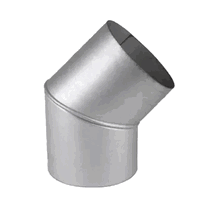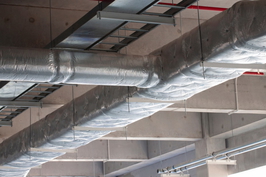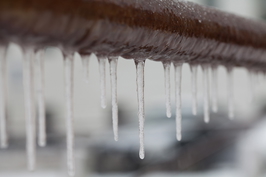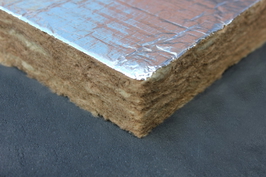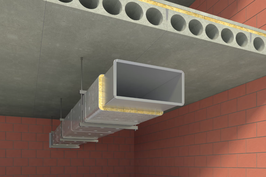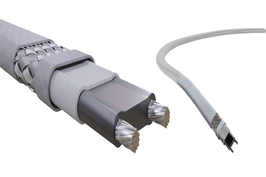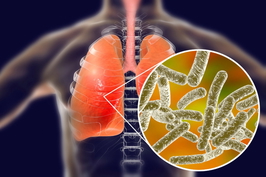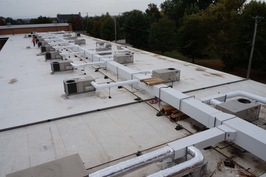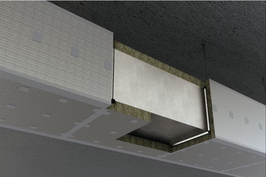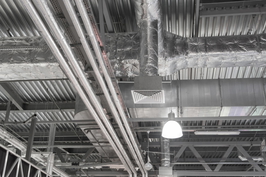Ac Duct Cladding
AC duct cladding involves the use of various materials, including galvanized steel, aluminium, stainless steel, and fiberglass. The choice of material largely depends on environmental conditions, insulation needs, and fire safety regulations specific to the UK.
Galvanized steel and aluminium are frequently used in both residential and commercial duct systems due to their strength, resistance to corrosion, and flexibility. These qualities make them suitable for a wide range of applications, from simple domestic ventilation to complex industrial systems.
Fiberglass offers excellent thermal and acoustic insulation properties, making it a valuable option where energy efficiency and noise reduction are priorities. However, it is less suitable for humid or moist environments, as exposure can compromise its structural integrity and insulation performance.
Selecting the appropriate material and ensuring proper installation are crucial for maintaining energy efficiency, durability, and safety. Understanding the specific factors that influence these choices highlights the importance of thorough planning and adherence to UK standards and regulations in duct cladding applications.
Common Materials Used for AC Duct Cladding
There are several common materials used for AC duct cladding, each chosen based on specific properties such as durability, insulation capability, and suitability for particular environments. Sheet metal, including galvanized steel and aluminium, is widely utilized because of its strength, corrosion resistance, and ease of sealing. Galvanized steel is preferred in residential and commercial applications due to its robustness, while aluminium offers a lightweight, flexible alternative for specialized systems such as cleanrooms. Sheet metal's durability makes it suitable for long-term use in various settings. Stainless steel is employed in critical environments such as commercial kitchens or fume exhaust systems because of its superior corrosion resistance and hygienic properties. Fiberglass-based cladding, made from fibres coated with foil, provides excellent thermal and acoustic insulation but is unsuitable for high-moisture areas. These materials serve different purposes, ensuring that duct systems perform efficiently under a variety of conditions. Moreover, consideration of industry standards and certifications ensures the selected materials meet safety and performance requirements necessary for specialized applications.
Key Benefits and Limitations of Duct Cladding Options
Selecting the right duct cladding requires careful evaluation of its benefits and drawbacks, as these factors significantly influence the performance, safety, and efficiency of HVAC systems. Effective cladding enhances energy efficiency through proper insulation, which minimizes heat transfer and helps conserve conditioned air, thereby reducing operational costs. It also plays a role in improving indoor air quality by limiting the growth of mold and microbial contaminants. Additionally, noise absorption properties offered by certain cladding materials contribute to quieter indoor environments. Proper installation is crucial to ensure the insulation performs as intended and doesn’t create thermal bridges or gaps. Properly specified materials, such as fire-rated options, can also provide an added layer of fire safety, which is essential for many commercial applications. However, some duct cladding materials may perform poorly in specific climates, affecting their long-term effectiveness. Incorrect installation can compromise the safety and efficiency of the system, making professional fitting essential. Regular inspections are vital to identify signs of moisture damage or degradation over time. It is worth noting that fire-rated cladding options tend to be more costly but provide an added layer of safety. The following table highlights these benefits and limitations, along with practical considerations for choosing the appropriate duct cladding:
Benefits |
Limitations |
Practical Considerations |
| Energy savings | Material effectiveness varies | Proper installation is essential |
| Improved indoor air quality | Potential moisture issues | Routine inspections should be scheduled |
| Noise reduction | Cost of fire-rated options | Regular maintenance enhances longevity |
| Fire safety enhancement | Effectiveness may diminish over time | Selection based on climate suitability |
| Maintains consistent indoor comfort | Compatibility with existing systems | Adequate ventilation is necessary |
When choosing duct cladding, it is important to consider the specific environmental conditions, system requirements, and safety standards applicable within the UK. Proper installation and ongoing maintenance are crucial to ensure optimal performance, safety, and durability of the HVAC system.
Considerations for Selecting and Installing Duct Cladding
Selecting and installing duct cladding requires careful assessment of multiple factors to ensure optimal system performance, safety, and longevity. The process begins by evaluating thermal insulation needs, ensuring the material maintains consistent temperatures while minimizing heat loss or gain. Thermal performance is critical in maintaining energy efficiency, especially in climate-sensitive environments. Moisture resistance is equally important, as it prevents condensation that could damage the system or reduce efficiency. Cladding materials must also comply with fire safety standards, offering protection without compromising safety. Durability and a long lifespan help reduce maintenance demands, while economic factors such as cost-effectiveness are also crucial in the selection process. Environmental conditions—such as temperature extremes, humidity levels, and corrosive environments—should influence material choice, highlighting the importance of sustainability and maintenance of indoor air quality. Proper installation is essential and involves effective sealing methods, precise fitting, and suitable adhesives, all carried out in accordance with safety protocols. Compatibility with existing duct materials, ease of maintenance, and accessible repair options further contribute to ensuring long-term system performance and reliability. Additionally, considering cladding materials’ acoustic properties can help minimize noise transmission in sensitive environments.
Conclusion
Selecting suitable AC duct cladding in the UK requires a thorough evaluation of material properties, environmental conditions, and budget considerations. It is important to consider compatibility with existing HVAC systems, ease of installation, and long-term durability. Proper installation plays a crucial role in ensuring effective insulation, protection against corrosion, and ease of maintenance. By understanding the advantages and limitations of various materials, professionals can make informed choices that optimise the performance, safety, and lifespan of duct systems. Accurate selection and installation practices are essential for reliable HVAC operation and efficient airflow management within the built environment.
